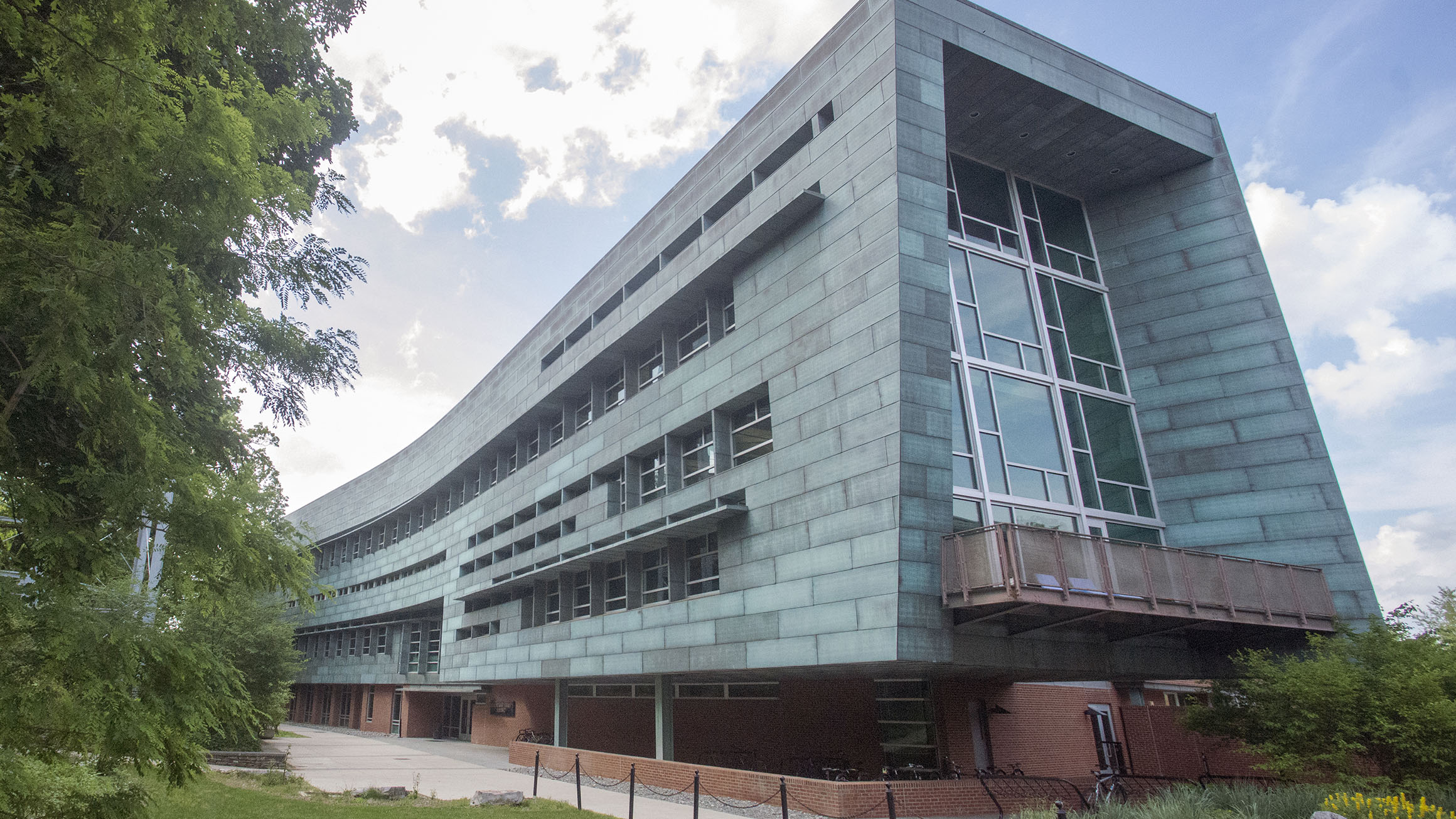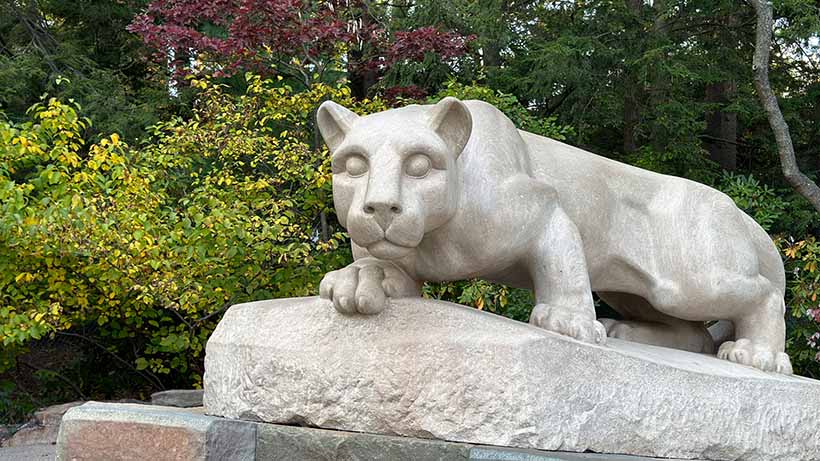UNIVERSITY PARK, Pa. — Working professionals in fields ranging from landscape architecture to geographic information systems (GIS) analysis have found the first course in the online geodesign graduate program highlights a practical, immediately applicable process for organized, creative problem-solving and dynamic collaboration.
The Penn State World Campus online graduate certificate and master's degree in geodesign programs offer an opportunity for planners, designers, or anyone working with land-use change issues to add innovative skills that leverage data and illustrate change scenarios for their clients.
An urban planner, a GIS analyst, and a landscape designer were recently interviewed to learn about their experience in the Graduate Certificate in Geodesign program offered online through Penn State World Campus and how the program will impact their work processes and career.
When asked what potential they saw for geodesign to apply to or improve their careers, each interviewee shared many different ways for the practice to positively impact their workflows.
Practical use
Dan Hoffman is a principal GIS analyst in the Los Angeles County Department of Regional Planning who is currently enrolled in the program. After taking the GEODZ 511 introductory course, he quickly realized where geodesign processes and technologies could be practically incorporated into his job.
“I work for an urban planning department in Los Angeles County, so for sure I can use geodesign to enhance our processes,” he said. “I was trained in GIS, but after 21 years of working for a planning department, I've learned so much about planning as well. There is a lot of overlap between geodesign and GIS/planning, but I think I'd like to bring in some more of these digital tools of 3D scenario visualizations, more suitability analysis, and more digital community engagement.
"Our department is pretty good about involving GIS early on in projects, but learning about the geodesign process has made me realize that we should be involved even sooner in the process, and I think I can bring some of the collaboration techniques in geodesign into the project planning we are doing at the department," Hoffman added.
Project enhancement
Allysha Lorber, a 1997 Penn State landscape architecture alumna who is a landscape architect and urban planner at JMT in Baltimore, has found similar ways in which geodesign processes and technologies could enhance the firm’s projects and better illustrate scenarios and models for her clients.
“I work for a company that has 1,600 employees,” she explained. “More and more often, when we’re looking at larger planning studies, there is a need for scenario modeling and scenario planning. And we’ve done it in a less sophisticated way. To me it’s time to up our game and do it in a more sophisticated way — to really harness the technology that is available and become more proficient, which is going to help us be better at what we do.”
Improved methods
Sebastian Gutwein is a principal designer at Regenerative Design Group in Greenfield, Massachusetts. He works in a small landscape design firm that is recently starting to take on larger statewide planning projects. After taking the first geodesign course, he said he appreciates finally having a method for predicting change.
“For me, when I started design school, I came out wanting to visualize change happening, but we didn’t have the tools at that time to realize that; I never felt like I really got exposure to those tools,” he said. “It's a constant evolution to be able to figure out the kind of tools and methods that allow change to happen in the world. I feel like geodesign makes up an important set of tools in my toolbox to be able to do that.”
Learning online
The students were also asked about their experiences taking courses in an online format. All responded with appreciation that learning online allows for an interesting cross-section of students and provides the flexibility of fitting course work into their busy schedules.
Lorber mentioned an overarching sentiment, “I was surprised at how diverse my classmates were [...] a lot of people who I would consider to be my peers professionally. It was nice. A lot of people brought a variety of different, interesting perspectives to the conversation.”
Gutwein also found the instructor’s office hours for general discussion to be a great way to make connections.
“There would be five or six other students who have amazing backgrounds online at the same time, (so) it was really great to be able to create connections that way," said Gutwein. "I could see the face-to-face aspect becoming a very valuable asset to online learning.”
During the pandemic, Lorber has enjoyed spending newfound free time gaining new geodesign skills.
“Because I have the flexibility and time in my day since I'm not commuting anywhere, I have extra time to do something like go back to school," Lorber said. "I used to spend one to two hours a day driving places, and I’m now using that time more productively by advancing my skill sets.”
When the students were asked whether they would recommend the geodesign program to their colleagues, all three responded with enthusiasm, stressing the need for these skills to be used more widely in practice in their respective fields.
“[I would] absolutely [recommend the program to colleagues]; it's welcoming, relevant, interesting, and easy to follow,” said Lorber. “At first I was thinking, ‘The future of planning is to be able to use this technology,’ but it's not the future, it's the now of planning. And if you're not using the technology, you're not doing your work as well as you could be, in my opinion.”
As a landscape designer breaking into planning roles, Gutwein stated, “I am in the position right now to be looking for these kinds of geodesign credentials and to be looking for a design process, personally. So, if there are others in a similar boat, I would definitely encourage them to take [the program].”
Hoffman also sees the program as beneficial and reflected on his experience working in the public sector.
“Yes, I would [recommend the program to colleagues],” he said. “I think geodesign speaks to how crucial it is to collaborate. Being in the public sector for over two decades, I've seen the tearing down of silos between departments, government, and the public, but I still see it happening in certain processes. I think geodesign provides a nice framework to collaborate in an organized way and can be a great project management tool for any design project.
Learn more about how to address complex environmental design problems through the Graduate Certificate in Geodesign and the Master of Professional Studies in Geodesign offered online through Penn State World Campus.

